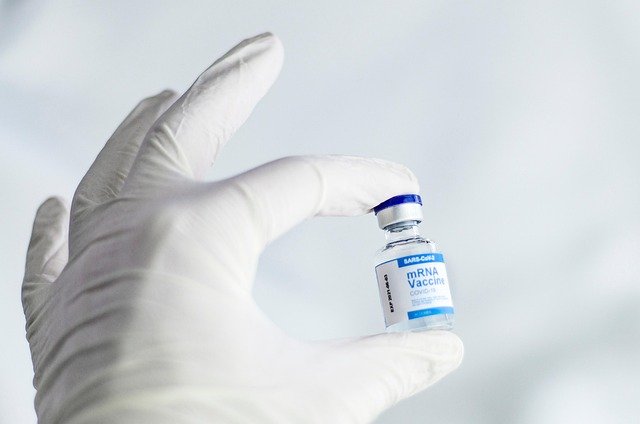Identifying Early Signs of Hepatitis C
Hepatitis C often progresses silently, with early symptoms resembling flu-like ailments or going unnoticed entirely. Its impact on the liver can lead to dire health consequences if undiagnosed. Understanding the early signs, prioritizing screenings, and exploring treatment options are essential to managing this condition effectively.

Early Warning Signs of Hepatitis C: What to Watch For
Hepatitis C is often referred to as a “silent” disease because many infected individuals don’t experience symptoms during the initial infection period. However, some people may develop subtle signs within 1-3 months after exposure. These early warning signs can include mild to moderate fatigue that seems unexplained, low-grade fever, muscle or joint pain, and decreased appetite. These symptoms closely resemble those of the common flu, which is why they’re often overlooked or misattributed to other minor illnesses.
Some individuals might also notice slight abdominal discomfort, particularly in the upper right side where the liver is located. Nausea may occur occasionally, though it typically isn’t severe enough to cause significant concern. Because these symptoms are so general and often mild, most people don’t seek medical attention during this early acute phase.
Silent Yet Serious: The Nature of Hepatitis C
What makes Hepatitis C particularly concerning is its ability to cause progressive liver damage while producing few, if any, noticeable symptoms. Approximately 75-85% of people who become infected with Hepatitis C will develop chronic infection, meaning the virus remains in their body and continues attacking the liver for years or decades.
During this chronic phase, the virus gradually causes inflammation that leads to scarring (fibrosis) of liver tissue. As this scarring progresses, it can eventually develop into cirrhosis, where the liver structure becomes significantly altered, impairing its ability to function properly. The insidious part of this progression is that it often occurs without symptoms until the liver damage is considerable—sometimes taking 20-30 years to manifest clearly.
This silent progression is why Hepatitis C has been called a “silent epidemic” and why screening is so crucial for those with risk factors, even in the absence of symptoms.
Symptoms to Look Out For as Hepatitis C Progresses
As Hepatitis C advances from the acute to chronic stage and liver damage accumulates, more definitive symptoms may begin to emerge. These can include persistent fatigue that interferes with daily activities, jaundice (yellowing of the skin and eyes), dark urine, clay-colored stool, and easy bruising or bleeding.
Some individuals may experience more pronounced digestive issues, including chronic nausea, vomiting, or abdominal pain. Spider angiomas—small, spider-like blood vessels visible on the skin—may appear, particularly on the chest and face. Fluid accumulation in the abdomen (ascites) and swelling in the legs are more severe signs that typically indicate advanced liver disease.
Cognitive symptoms can also develop, including difficulty concentrating, memory problems, and confusion. These neurological effects, sometimes called “brain fog,” result from the liver’s decreased ability to filter toxins from the bloodstream, allowing these substances to affect brain function.
The Importance of Early Diagnosis and Treatment
Early diagnosis of Hepatitis C has never been more critical, as modern treatments have revolutionized outcomes for those infected. Unlike in previous decades when treatments were lengthy, difficult to tolerate, and often ineffective, today’s direct-acting antiviral medications can cure more than 95% of Hepatitis C infections in just 8-12 weeks, with minimal side effects.
The key is detecting the infection before significant liver damage occurs. A simple blood test can detect Hepatitis C antibodies, indicating exposure to the virus. If this test is positive, a follow-up RNA test determines whether an active infection is present. For those with confirmed infections, additional tests may assess liver damage and determine the specific viral genotype to guide treatment decisions.
The Centers for Disease Control and Prevention (CDC) now recommends one-time Hepatitis C screening for all adults aged 18 years and older, with ongoing periodic testing for those with continued risk factors. This recommendation acknowledges that many people with Hepatitis C aren’t aware of their infection status due to the lack of symptoms.
Preventive Measures and Risk Reduction Strategies
Since there is no vaccine for Hepatitis C, prevention focuses on reducing exposure risk. The primary transmission route is through blood-to-blood contact. The most common risk factors include:
-
Current or past injection drug use (including sharing of needles or other equipment)
-
Receiving a blood transfusion or organ transplant before July 1992 (when widespread screening began)
-
Receiving clotting factor concentrates before 1987
-
Long-term hemodialysis
-
Being born to a mother with Hepatitis C
-
Healthcare exposures (such as needlestick injuries)
-
Getting tattoos or piercings in unregulated settings
-
Sharing personal items that might have blood on them (razors, toothbrushes)
For those diagnosed with Hepatitis C, lifestyle modifications can help protect liver health while undergoing treatment. These include avoiding alcohol, maintaining a healthy weight, getting vaccinated against Hepatitis A and B, and consulting with healthcare providers before taking medications or supplements that could affect the liver.
Treatment Options and Expected Outcomes
Modern Hepatitis C treatment has been transformed by direct-acting antivirals (DAAs), which target specific steps in the Hepatitis C virus life cycle. Unlike older interferon-based therapies, these newer medications have success rates exceeding 95%, shorter treatment durations (typically 8-12 weeks), and significantly fewer side effects.
The specific treatment regimen depends on several factors including the viral genotype, the extent of liver damage, prior treatment history, and any other medical conditions the patient may have.
| Treatment Option | Average Cost (without insurance) | Treatment Duration | Cure Rate |
|---|---|---|---|
| Mavyret (glecaprevir/pibrentasvir) | $13,000-$25,000 per month | 8-12 weeks | >95% |
| Epclusa (sofosbuvir/velpatasvir) | $24,000-$30,000 per month | 12 weeks | >95% |
| Harvoni (ledipasvir/sofosbuvir) | $30,000-$40,000 per month | 8-12 weeks | >95% |
| Zepatier (elbasvir/grazoprevir) | $18,000-$26,000 per month | 12-16 weeks | >95% |
Prices, rates, or cost estimates mentioned in this article are based on the latest available information but may change over time. Independent research is advised before making financial decisions.
Most insurance plans, including Medicare and Medicaid, now cover Hepatitis C treatments, though coverage criteria vary. Patient assistance programs from pharmaceutical companies and nonprofit organizations can help reduce costs for those without adequate insurance coverage.
After successful treatment, most people remain virus-free permanently. However, treatment doesn’t provide immunity against future Hepatitis C infections, so continued preventive measures remain important. Regular follow-up with healthcare providers is recommended to monitor liver health, especially for those who developed significant liver damage before treatment.
Identifying Hepatitis C in its early stages and pursuing timely treatment represents the best opportunity to prevent serious liver complications and maintain overall health. With today’s highly effective treatments, what was once a potentially devastating chronic disease can now be cured in the vast majority of cases.
This article is for informational purposes only and should not be considered medical advice. Please consult a qualified healthcare professional for personalized guidance and treatment.




